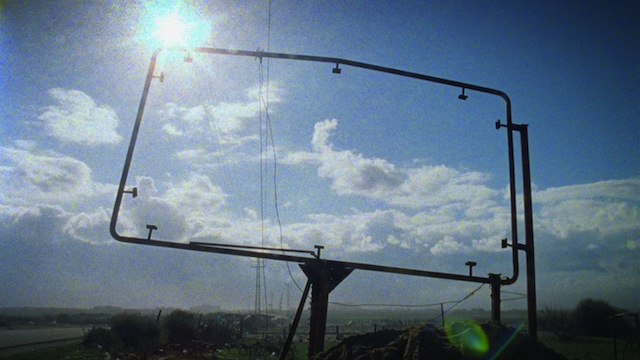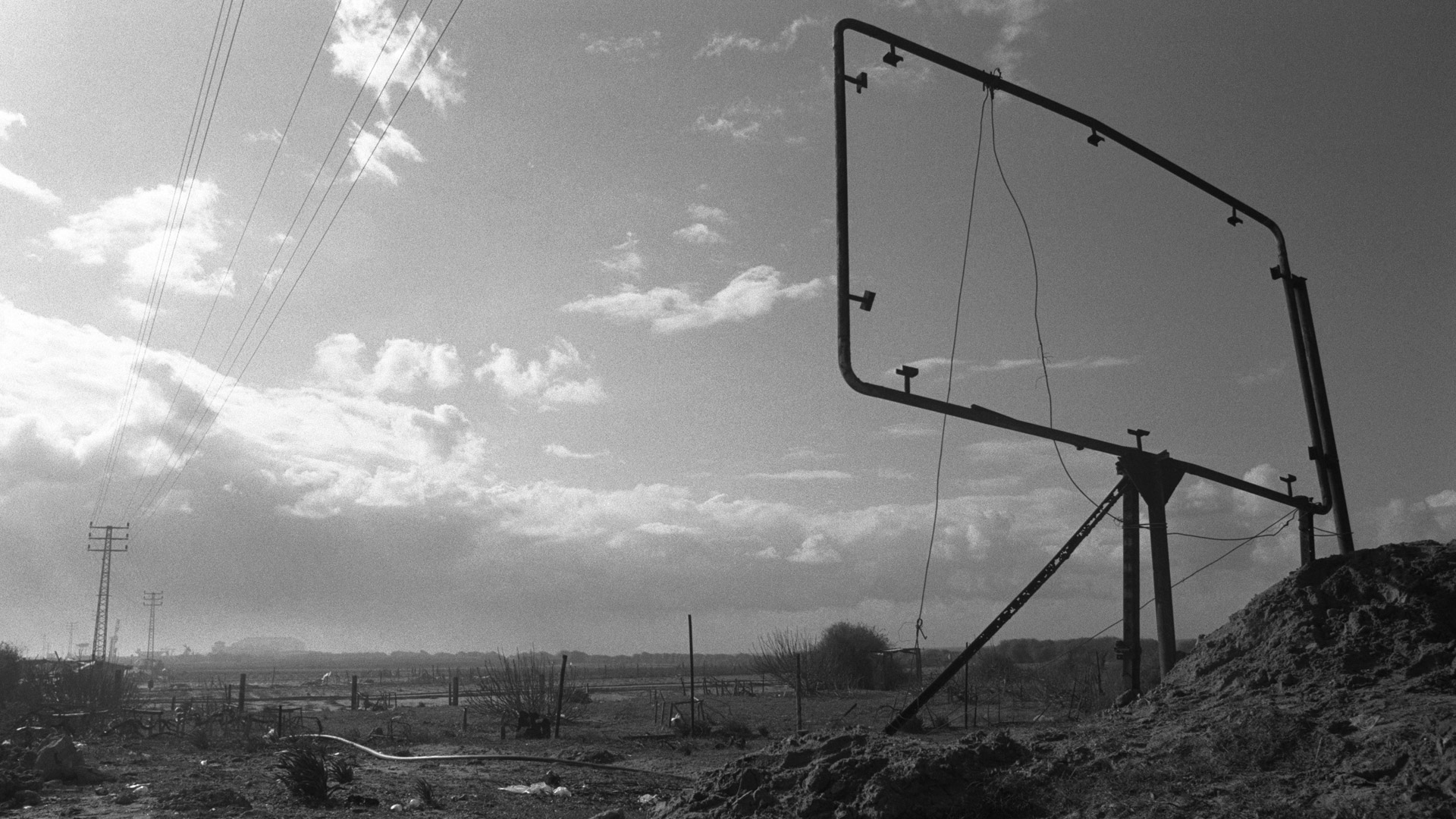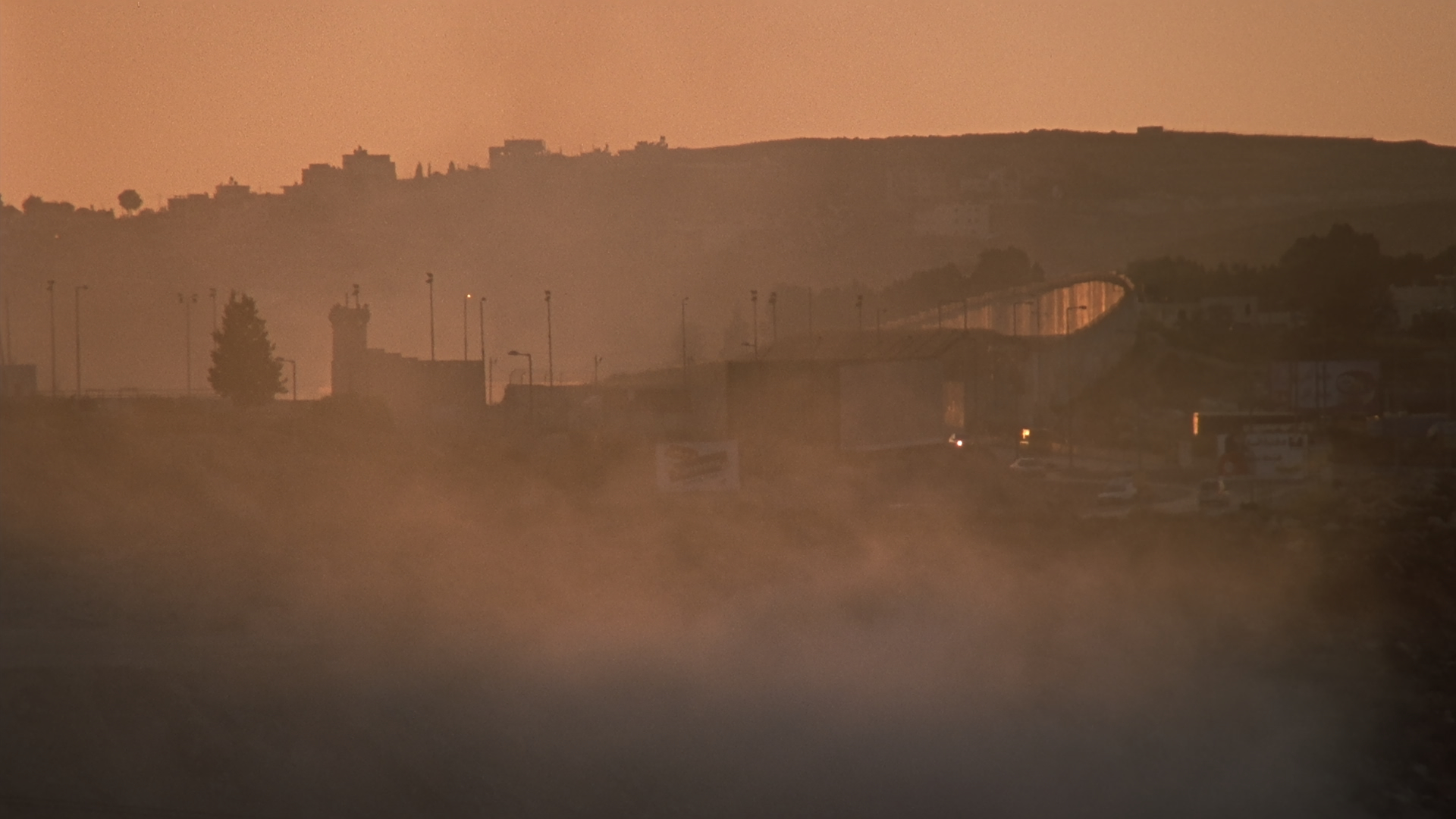Re-release of 'notes to eternity'
26 April 2025
Despite attempts to stifle notes to eternity - stretching back a number of years - we are now not too far away from making it available.
If you would like to assist, please consider making a donation here: https://www.cmfilms.co.nz/dona...
For more information, you can reach me through the contact page on this website.

Images: © Crow McNally Films
All rights reserved
Posted 26th Apr in Blog

Remembering Robert Fisk
I was very much saddened to learn that Robert Fisk had died suddenly in Dublin on 30 October 2020. I had the privilege of having him feature as a main character in my documentary film ‘notes to eternity'.
Robert was a force of nature; his indomitable energy palpable from the first contact I made with him from New Zealand, speaking to him on his mobile as he was driving through South Lebanon. It was the first of many such calls, before I finally landed in Beirut with a New York-based crew - cinematographer Jonathan Furmanski and sound recordist/videographer Arun Chaudhary – in the early 2000s. On his recommendation we stayed at the now modest Mayflower Hotel, once the infamous haunt of Beirut-based foreign correspondents during the Lebanese Civil War (1975-1990), and earlier still the choice of literary luminaries such as Graham Greene. I arrived from a shoot in New York with already stretched credit cards – an occupational hazard for most independent filmmakers – and Robert helped broker a good deal for us with the owner whom he knew and we luckily made our home in a far-flung corner of this faded gem for the duration of the Lebanon shoot.
The first day Robert came by the hotel in the evening to take us back to his home on the waterfront, on the Corniche. We sat on his balcony overlooking the Mediterranean as he poured us the stiffest G&Ts one could imagine, and heard stories of war and extraordinary encounters.
Over the next days we filmed almost without pause all these stories and more – in the car, out in the field, in his apartment. Some of them were soon to be included in his magnum opus The Great War for Civilisation: The Conquest of the Middle East (2005) which he was writing at the time, and as a result had that aura of freshness that is hard to repeat.
He took us south to the Lebanese border with Israel, stopping several times en route to explain some of the historical complexity of Lebanon that has seen armies march through it over millennia. The stories and histories were delivered with such passion and professionalism that as I found out much later in the edit suite the footage needed little or no cutting, and in fact some of the scenes used in the film are largely untouched. They seemed to demand this.
In particular, a scene recounting his experience of being one of the first journalists to witness the aftermath of the massacre of Palestinians at Sabra and Shatilla refugee camp in 1982 by an Israeli-backed Christian militia. And also, his account of the Israeli bombing of the UN refugee camp at Qana over a decade later, in 1996.
It is an understatement to say Robert Fisk was a brilliant man. He worked tirelessly to educate his readers and listeners about the realities of war and the inadequacies of corporate, mainstream journalism to convey these realities, and the geo-political forces that underpin them.
By contrast, he was a Renaissance journalist: steeped in historical and cultural knowledge, with a keen eye for the vagaries of the human condition. Quoting prolifically from writers from Auden and Yeats to Shakespeare and Aristotle, to Churchill and all in between, he framed the world he saw with a nuanced literary and historical lens. It is a rare constellation of ability and humanity that can do this, and encapsulate so much in such a short space and with such clarity.
He was constitutionally averse to lazy platitudes, and this manifested in his attention to detail and his refined interest in the ordinary person’s experience of history. He took the road less travelled, notebook in hand, as one of history’s first responders, mocking those who engaged in what he called “hotel journalism”.
And while he repeatedly admonished me and the crew to “stop pfaffing around” as we lingered in locations to record sound and shoot additional material on 16mm film, he was in fact supremely generous with his time and wairua. I was always impressed by his willingness to engage with people who had little or no profile. He took people as he found them, and not for the people they associated with – an attribute that is also a distinguishing feature of the other three characters in ‘notes to eternity’: Noam Chomsky, Sara Roy and Norman Finkelstein.
What a privilege it is to have spent the time we had with him on location in Lebanon, Wellington and New York. And I know others I worked with on these shoots, in particular Alun Bollinger who was the cinematographer on the Wellington and New York shoots, felt similarly.
Thank you Robert Fisk.

Posted 31st Dec in Blog
POST 6
9 November 2017
Some commentary following the recent release of notes to eternity in the United Kingdom.
- Brian Klug, who attended the British premiere at the Genesis Cinema in London on 26 October 2017, made this statement:
"Sarah Cordery's Notes to Eternity is unlike any other documentary I have seen on the conflict between the State of Israel and the Palestinian people. Cordery approaches the issues via the experience of four prominent critics of Israel. None of the four is Palestinian or Israeli, but each, in her or his own way, has an intimate connection to the conflict. Though they share a critical stance towards Israel, they do not toe a party line. They see the conflict with their own eyes, they think about it in their own skin. In the process, Cordery humanizes the two peoples locked in (unequal) conflict. It is rare to see a film on Israel and Palestine that distinguishes clearly between oppressor and oppressed without either demonizing the one or idealizing the other.
Dr Brian Klug
Senior Research Fellow in Philosophy
St Benet's Hall
University of Oxford"
[Brian Klug has written widely on the Israel-Palestine issue and related matters. See profile http://www.philosophy.ox.ac.uk/people/dr-brian-klu... & https://en.wikipedia.org/wiki/Brian_Klug]
- The film also screened as part of the Screening Rights Film Festival (26 October - 1 November 2017) in Birmingham, UK. The organisers posted this commentary following the screening and Q&A:
"On day 5 of the festival, we screened the highly compelling 'Notes to Eternity'. It is a 'meditation' on the Israel-Palestine conflict via portraits of four of its key non-Palestinian observers: Robert Fisk, Sara Roy, Norman Finkelstein and, principally, Noam Chomsky. It's heart-rending stuff - not just because of the ongoing horror of the Palestinians' situation but because it captures the determination and hints of despair of some of its keenest observers. That three of these are Jewish and have long ago squared their own traditional/religious/zionist/anti-semitic experiences with the unquestionable need for justice for the Palestinians, in sharp contrast to the dominant Jewish voice, reveals the impossible terrain they tread.
Such terrain is the
literal and figurative backdrop to the film and it is no surprise then
that it should be included within a festival dedicated to exploring or
exploiting the potential of film to affect or even effect personal,
social and political change. 'Notes to Eternity' inspires reaction
precisely not through polemics - the common mode of political debate,
especially pertaining to all things Israel-Palestine. Instead, its slow,
accumulating, often poetic but always gripping sense of human reason,
dedication and vulnerability in relation to Palestinian experience
opens up a space for thought and feeling beyond the usual polarisation."
The Screening Rights Film Festival is run under the auspices of the University of Birmingham, the University of Warwick and the Midlands Art Centre (MAC) Birmingham. Programme: https://issuu.com/srff/docs/srff_2017_8pp_brochure...

Image ©️ Crow McNally Films. All rights reserved
Posted 8th Nov in Blog
POST 5
Following notes to eternity's selection for the Belfast Film Festival in April 2017, it is headed back to the UK for its British premiere at the Genesis Cinema in London on 26 October 2017, followed by its Scottish premiere at the Glasgow Film Theatre on 28 October. And then on to the Screening Rights Film Festival in Birmingham on 30 October. The director Sarah Cordery along with Sara Roy, one of the film's four main characters, will be attending for post-screening Q&As.

Image copyright: Crow McNally Films. All rights reserved
Posted 2nd Oct in Blog
POST 4
A review of notes to eternity in University of Otago's Critic Magazine [Critic Issue 13, 2016] - during the recent limited theatrical release in New Zealand - gave the film an ‘A’ rating and while it's gratifying to get critical affirmation, the reviewer made this statement which demands response:
“… It [the film] tackles all of the difficult issues headfirst, with the thesis that the Holocaust is now being repeated against Palestinian civilians …”
The film in fact does not present nor set out to present such a thesis: a literal equivalence between the Nazi Holocaust and the treatment of the Palestinians. Nor is this something the four characters in the film articulate.
Undoubtedly, visual parallels can be drawn from the containment mechanisms used by the Israeli occupation: the Wall, the electrified fences, the ubiquitous watch towers, checkpoints and barriers, and the corralling of the Palestinian population into designated areas, regulated by forms of identification, subject to random arrest and incarceration. There are also parallels to be found in what José Saramago once called “the spirit of the occupation”, manifest in the institutionalized dehumanization of a people.
These are things Sara Roy, a child of Holocaust survivors, once spoke about as she walked along part of the wall Israel has constructed in the West Bank [this scene is not in the final cut]:
“I can’t begin to tell you how painful and upsetting this is to me. These walls, the barbed wire… What would my mother say if she saw this, yet again? I mean the Holocaust imagery is very powerful, at least for me, the watchtowers and the barbed wire and the sense of containment and violence… I can’t help but wonder is this why my grandparents and my aunts and uncles and all the many people in my family and so many millions of Jews were murdered. Absolutely not. In fact their deaths are often used to justify and legitimise Israeli occupation and the oppression of Palestinians and that is something I have fought my entire academic life against and many Jews, an increasing number of Jews also because they recognize that it is not only an obscenity, it is so damaging to us as a people.”
She continued:
“ … the Holocaust imagery in the West Bank is extraordinary, and for me as a child of survivors I look at it and that is what immediately comes to mind. You know, the parallels exist, the parallels exist in the sense that the dehumanisation, the denigration of the ‘Other’ is I think very, very similar…. Of course there are great distinctions in terms of scale, in terms of intent. I mean many people would disagree with me and say that the Israelis are bent on the genocide of the Palestinians. I don’t believe that.”
There is no doubt the Holocaust is an historical and cultural cairn that towers over this conflict. It looms large in the collective and individual psyche. notes to eternity references some of this influence, directly and indirectly, through the stories and reflections of the film’s characters. These threads are too numerous and complex to go into here, and they by no means constitute the sole focus of the film.
It is nevertheless worthwhile to contemplate the question Sara Roy relates near the start of the film, and which she has heard time and again, referencing the treatment of the Palestinians: “How can the children of the Holocaust do such things?” It's a framework for discussion that doesn’t require or imply literal equivalence.
Posted 18th Oct in Blog
POST 3
Review of notes to eternity in stuff.co.nz (The Dominion Post, The Press) by Graeme Tuckett. Four stars **** "Very recommended"
http://www.stuff.co.nz/entertainment/film/film-rev...
Posted 23rd May in Blog
POST 2
Film still from notes to eternity: Noam Chomsky surveys the Doomsday Clock.
Image © Crow McNally Films. All rights reserved

Posted 27th Jan in Blog
POST 1

Image © Crow McNally Films. All rights reserved
In anticipation of the film's release in May 2016, this blog is a place for updates as they come to hand, and also a space for various notes and ideas related to notes to eternity. Please feel free to contact me if you want to respond to any of the posts. Just go to the 'Contact' page and send me a message/email. Also, please join our mailing list.
Thanks for visiting.
Intro notes to 'notes to eternity' #1
Early in the film, Jewish American scholar, writer and activist Norman Finkelstein recalls his first visits to the occupied territories in the late 1980s - during the First Intifada - as a time when "there was this real welcoming of foreigners but with the expectation that we were going to go back and tell the truth about the Israeli occupation". "Back then", he went on to say, "Palestinians had a deep perhaps to some extent naïve belief that if the world saw what was happening here, that they would win their case in the court of public opinion and the occupation would end".
This idea that a sufficiently informed public can be mobilised in the direction of justice and human rights - that knowledge provides the catalyst for effective change - is a core belief that motivates most activism.
The four figures in notes to eternity - Noam Chomsky, Sara Roy, Norman Finkelstein and Robert Fisk - have been documenting and analysing this conflict and related issues for decades; disseminating information tirelessly. They are part of a now substantial slipstream of scholars, journalists and commentators working to ensure that people can know what is happening.
But Chomsky, Roy, Finkelstein and Fisk have been doing it longer than most. All have received hefty criticism, threats and smears for their efforts. All have remained undeterred. Gesturing towards the Wall in the West Bank on a shoot for the film, Jewish American academic and author Sara Roy summed up a prevailing sentiment: "Not on my watch."
When I began this project, much of my research involved looking into representations of the Israel-Palestine conflict, not least in the mainstream media. I was intrigued also to look at their residue in public perceptions of the issue, many of which are sustained despite this substantial body of work signposting a different take on the conflict's history, its ongoing mechanisms and effects.
My own observations from spending significant time in the region also pointed to a critical disconnect between how the conflict is commonly reported in the media and what was happening on the ground. It was hard to ignore.
And while I was not interested in making a discursive film specifically focussed on the nature of these representations - an obvious trajectory for a 'documentary' film on this subject - this research provides the largely submerged bedrock of the film, and the basis for part of the film's point of departure in stylistic terms.
I chose to focus on Chomsky, Roy, Finkelstein and Fisk for multiple reasons. Not only do they all bring to the table a rich vein of background scholarship and commentary as chroniclers of the Israel-Palestine issue - one that offers a strong counter-narrative to much mainstream discourse on the subject - but their own lives offered a way for the film to tap into various defining historical events and cultural lines that have had an impact on the Israel-Palestine issue.
They are all remarkable people.
notes to eternity weaves in and around their lives and ideas, taking 'notes'. It is not a comprehensive presentation of either the history of the Israel-Palestine conflict nor their biographies. It's a series of 'fragments', inviting people to follow the multiple threads, and explore the lacunae and metaphors that the medium of film - as with other art forms - naturally evokes.
Posted 28th Oct in Blog
